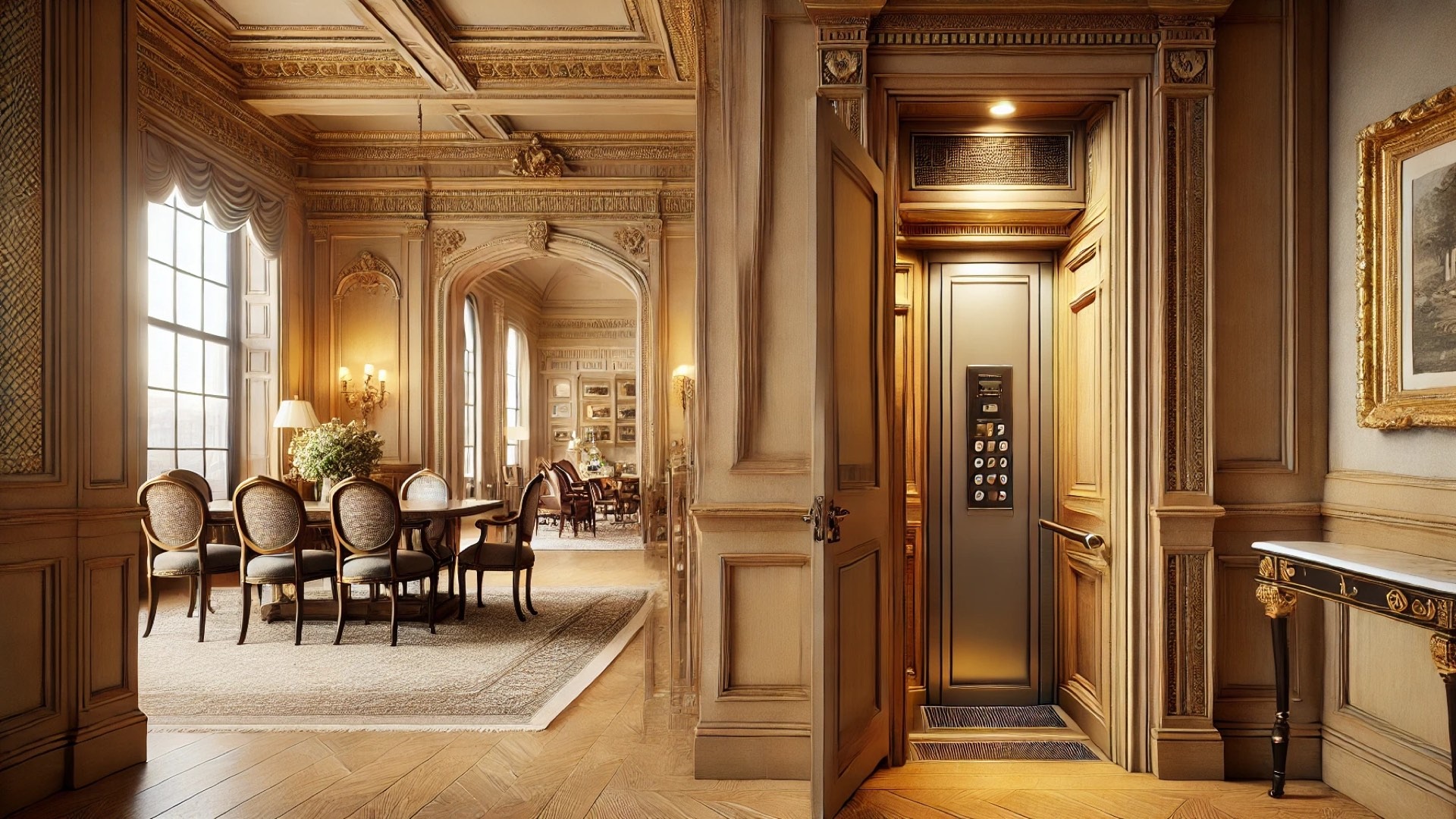
The Allure of the Dumbwaiter: A Peek into its Fascinating History
For many homeowners today, a dumbwaiter is nothing more than an elegant relic tucked away behind a small door, lost in the annals of time. However, this ingenious invention holds a rich history that resonates with luxury, convenience, and a touch of the whimsy. It’s incredible to think that this unique accessibility feature once graced the finest homes and provided a seamless way for service and residents to share meals, all while keeping up the air of exclusivity that marked the Gilded Age.
The Origins: Serving with Elegance
Initially, the term “dumbwaiter” referred to simple, tiered serving tables used in dining rooms to keep food and beverages within reach without the need for hovering staff, thus allowing for private conversations. As noted by the White House Historical Association, these tables were practical tools, enabling discreet service while enhancing the dining experience.
Thomas Jefferson played a pivotal role in popularizing a more sophisticated version of the dumbwaiter at his estate, Monticello. Inspired by French dining customs, he incorporated innovative designs that cleverly concealed mechanisms for lifting wine from the cellar, all while paying homage to the need for elegance in service
The Leap into Mechanization: A Turning Point
Fast forward to the 19th century, and the dumbwaiter evolved dramatically. Inventors like George W. Cannon patented mechanical versions that took convenience to new heights—literally! This transformation coincided with the rapid urbanization of cities, where wealthier residents began demanding modern conveniences. In luxurious residences like Newport’s Biltmore House, dumbwaiters enabled the staff to circulate food effortlessly between floors, proving that ease did not exclude style, even in grand homes.
Luxury apartments and hotels began to adopt these mechanical wonders. The Ritz Tower in Manhattan, for instance, marketed an elite living experience complete with dumbwaiters that delivered meals straight to residents' doors, allowing the city’s affluent residents to enjoy gastronomical delights without ever leaving their sumptuous abodes.
The Decline: A Shift in Residential Design
Despite their practical advantages, dumbwaiters fell out of favor in the mid-20th century as modern architecture began to embrace open floor plans and more casual styles of living. The preferences shifted from employing intricate designs to larger, multifunctional spaces. It became more common to entertain superbly equipped kitchens rather than keeping food service systems confined to specific areas. However, there remains a timeless charm and elegance associated with these unique devices that many upscale homeowners seek to preserve today.
Reviving a Classic: Modern Applications of the Dumbwaiter
Today, the resurgence in interest surrounding these historical features speaks to a desire for unique home designs paired with modern conveniences. More homeowners are reintroducing dumbwaiters not only for convenience but as conversation pieces—works of art that celebrate a unique past while adding value and functionality to properties.
As architectural enthusiasts and homeowners prioritize craftsmanship, this historical nod could also enhance property aesthetics considerably. Homeowners today can consider retrofitting dumbwaiters for efficiency while preserving the character of their historic properties.
Cultural Relevance: More Than Just a Home Feature
Incorporating a dumbwaiter goes beyond aesthetics and convenience; it signifies a return to thoughtful, artful design—a signature of craftsmanship steeped in history. By choosing to preserve or integrate such features, owners are not only enhancing their living space but also sharing a unique narrative of innovation and tradition.
As you embark on your own home improvement journey, reflect on the stories your residence tells. Could a dumbwaiter be the exquisite cherry on top of your luxurious abode? Such decisions not only offer tangible benefits but also celebrate the artistry and craftsmanship that your home embodies.
 Add Row
Add Row  Add
Add 




Write A Comment